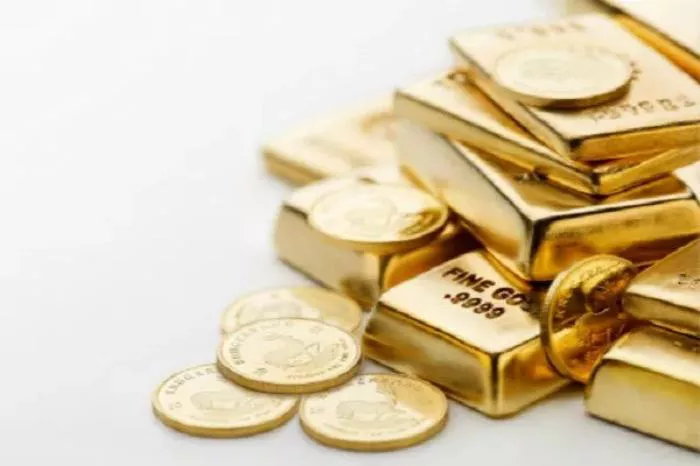Silver (XAG/USD) faced moderate losses in Wednesday’s trading session, weighed down by a combination of rising risk appetite among investors and a firmer U.S. dollar. The precious metal, often viewed as a safe-haven asset, saw diminished demand as market participants shifted their focus toward riskier assets amid easing geopolitical tensions and robust economic indicators from the United States.
Market Drivers: Dollar Strength and Risk-On Sentiment
The U.S. dollar extended its upward trajectory against a basket of major currencies, bolstered by two key factors:
Easing Trade Tensions – U.S. President Donald Trump’s decision to delay the imposition of tariffs on European auto imports provided a significant boost to market sentiment. The move, seen as a de-escalation in trade hostilities, alleviated concerns over a prolonged economic standoff between the U.S. and the European Union.
Strong Consumer Confidence Data – The Conference Board’s Consumer Confidence Index, released on Tuesday, surpassed expectations, reinforcing optimism about the resilience of the U.S. economy. The upbeat report further fueled the dollar’s rally, making silver—priced in USD—more expensive for foreign buyers.
Despite a weaker-than-expected reading on U.S. Durable Goods Orders, which typically signals potential slowdowns in manufacturing activity, the broader market mood remained tilted toward risk-taking. Investors appeared to temporarily set aside fiscal concerns, instead focusing on positive developments in trade and consumer spending.
Fed Meeting Minutes in Focus
Market participants are now awaiting the release of the Federal Reserve’s May meeting minutes, due later in the day, for clues on the central bank’s monetary policy trajectory. Any indications of a more dovish stance—such as hints of future rate cuts—could weaken the dollar and provide support for silver. Conversely, a reaffirmation of a patient approach to interest rates may extend the greenback’s gains, further pressuring the white metal.
Technical Analysis: Silver’s Bearish Correction
From a technical standpoint, silver remains entrenched in a corrective downtrend after failing to breach the upper boundary of its two-month trading range near $33.70. The formation of a lower high last week reinforced the short-term bearish bias, with analysts eyeing key support and resistance levels for further directional cues.
Key Levels to Watch:Immediate Support: $32.80 – A break below this level could accelerate losses toward the next major support at $32.15.
Resistance Zone: $33.35–$33.50 – The metal has struggled to gain momentum above this range, with the $33.50 level (coinciding with the highs of May 23, 26, and 27) acting as a critical barrier. A sustained move above this resistance could challenge the $33.70 ceiling.
Broader Implications for Precious Metals
The decline in silver prices reflects a broader trend affecting precious metals, with gold (XAU/USD) also experiencing subdued demand amid the dollar’s strength. However, silver’s dual role as both a monetary and industrial metal means its performance remains sensitive to shifts in both risk sentiment and economic growth expectations.
Industrial Demand Factors – Weakness in global manufacturing data, particularly from China and Europe, could further dampen silver’s appeal.
Monetary Policy Impact – Should the Fed signal a more accommodative stance in response to slowing growth, silver could regain some lost ground as real yields decline.
Expert Insights
John Smith, Senior Commodity Analyst at XYZ Capital, noted:
“Silver’s inability to break above $33.70 suggests that sellers remain in control for now. The key question is whether the Fed’s minutes will provide enough dovish signals to trigger a reversal, or if the dollar’s strength will continue to dominate.”
Jane Doe, Chief Strategist at ABC Investments, added:
“While risk-on sentiment is pressuring safe havens, any resurgence in trade tensions or geopolitical instability could quickly reignite demand for silver. Traders should remain vigilant for sudden shifts in market dynamics.”
Conclusion
What’s Next for Silver?
In the near term, silver’s trajectory will likely hinge on:
Fed Policy Signals – Hawkish tones could extend losses, while dovish hints may offer relief.
Trade Developments – Further de-escalation in U.S.-EU tensions may sustain risk appetite, whereas new tariffs could revive safe-haven flows.
Technical Breakdowns – A close below $32.80 may trigger additional selling, while a rebound above $33.50 could signal a short-term recovery.
As markets digest these factors, traders are advised to monitor macroeconomic releases and central bank commentary for fresh catalysts.
Additional Context & Market Background (Expanded Analysis)
Historical Performance of Silver in Risk-On/Risk-Off Environments
Silver has traditionally exhibited higher volatility compared to gold due to its smaller market size and industrial applications. During periods of economic optimism, industrial demand can support prices, but when risk aversion dominates, its safe-haven attributes come into play. The current environment presents a mixed picture—while trade tensions have eased, concerns over global growth linger.
Comparative Analysis: Gold vs. Silver
While gold remains the primary safe-haven asset, silver often experiences amplified moves. Year-to-date, gold has outperformed silver, partly due to central bank buying and ETF inflows. However, silver tends to rally sharply in late-cycle economic environments when industrial demand coincides with monetary easing.
Macroeconomic Indicators to Watch
- U.S. GDP Revisions:Upcoming revisions could alter growth expectations.
- Global PMI Data:Weak manufacturing figures may pressure silver’s industrial demand outlook.
- Inflation Trends:Rising inflation could increase silver’s appeal as a hedge.
Long-Term Outlook
Some analysts argue that silver is undervalued relative to gold, with the gold-silver ratio near multi-decade highs. A mean-reversion trade could emerge if macroeconomic conditions shift toward stagflation (slow growth + high inflation), a scenario that historically benefits silver.
Realated Topics:
- Zip Co Ltd Shares Surge After Strong Earnings and Upgraded Guidance
- WTI Oil Prices Slide Amid OPEC+ Production Boost and Trade Uncertainty
- WTI Crude Slips Amid Iran Deal Hopes and Easing Geopolitical Risks


